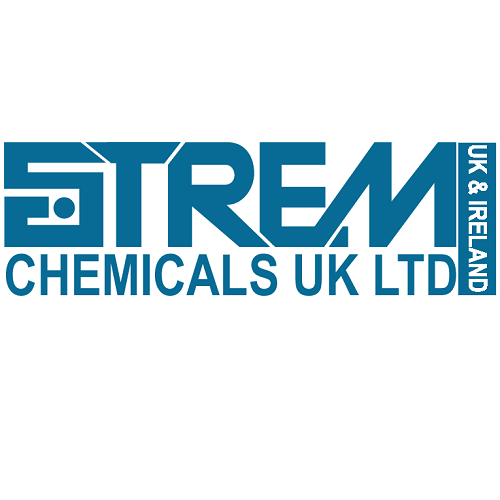Reusable catalysts from Strem Chemicals UK

CO and CO2 processing with KCC-1 silica nanoparticles showing in the fibrous form of silica support
Strem Chemicals has a new family of fibrous shaped KCC-1 silica nanoparticles that allow effective processing of carbon mono- and dioxide emissions. In comparison to conventional porous silica, the internal volume and surface area of KCC-1 are highly accessible due to its unprecedented fibrous, rather than porous, structure.
Impregnating the mesoporous fibrous KCC-1 with gold2 or silver3 salts, followed by subsequent reduction, allows for the formation of highly dispersed silica supported metal catalysts. When KCC-1 is decorated with silver nanoparticles, the migration and agglomeration of Ag particles can be effectively hindered by the open access of a mesoporous surface. Therefore, Ag/KCC-1 shows very high catalytic activity.3 For Au nanoparticles on KCC-1, the catalytic activity has proven to be size dependent.2
Mesoporous silica KCC-1 is characterized by its high basicity and oxygen vacancy. This feature greatly increases the reaction rate by adsorbing and activating the carbon-oxygen bond.4 Therefore, catalytic activity of pure KCC-1 for CO2 methanation is more active compared to conventional MCM-41 silica.5 IR studies suggest that the basicity of the catalyst causes the gaseous CO2 molecules to be adsorbed at the surface of KCC-1 while filling oxygen vacancies of mesoporous silica. The adsorbed carbon dioxide subsequently undergoes dissociation allowing easy interaction with hydrogen which leads to the formation of methane.5
Tetraethylene pentamine (TEPA) functionalized KCC-1 are promising adsorbents for CO2 capture. These compounds demonstrate faster adsorption–desorption kinetics as well as effective regeneration and reuse. In addition, the studied materials exhibit excellent thermal and mechanical stability.6
Heteropolyacid-based ionic liquids immobilized onto fibrous nano-silica serve as an efficient catalyst for the synthesis of cyclic carbonate from carbon dioxide and epoxides7
Studies have shown that the catalyst can be reused for ten consecutive cycles without any significant loss of activity. The developed method of synthesis in this study indicates a green and low-cost protocol for making heteropolyacid-based catalysts and similar materials.
Complex catalytic systems involving PbS nanoparticles, ionic liquids, and KCC-1 support can be used for dehydrogenation of formic acid to form hydrogen and carbon dioxide.8 However, the application of lead compounds for hydrogen production is not as desirable in comparison to environmentally friendly ruthenium9 or iron catalysts such as Tris{[2-(diphenylphosphino)ethyl]phosphine}(fluoro)iron(II) tetraphenylborate 26-3955.10 CAS 1318882-57-3
References:
- Angew. Chem. Int. Ed., 2010, 49, 9652.
- ChemCatChem, 2016, 8, 1671.
- Microporous Mesoporous Mater., 2017, 242, 90.
- J. Am. Chem. Soc., 2016, 138, 6298.
- Appl. Catal. A., 2017, 532, 86.
- Chem. Sci., 2012, 3, 2224.
- Green Chem., 2015, 17, 3059.
- Microporous Mesoporous Mater.,2016, 234, 310.
- Nature, 2013, 495, 85.
- Chem. Eur. J., 2014, 20, 13589.
Products mentioned in this blog and related products:
14-6100: High Surface area Silica nanoparticles, Large, particle size ~900-1000 nm, surface area ~700 m2/g, (KCC-1 L1) [112945-52-5]
14-6110: High Surface area silica nanoparticles, large, particle size ~900-1000 nm, surface area ~600 m2/g, (KCC-1 L2) [112945-52-5]
14-6120: High Surface area Silica nanoparticles, Large, particle size ~900-1000 nm, surface area ~550 m2/g (KCC-1 L3) [112945-52-5]
14-6200: High Surface area silica nanoparticles, medium, particle size ~400-450 nm, surface area ~400 m2/g, (KCC-1 M1) [112945-52-5]
14-6210: High Surface area silica nanoparticles, medium, particle size ~300-350 nm, surface area ~600 m2/g, (KCC-1 M2) [112945-52-5]
14-6300: High Surface area Silica nanoparticles, small, particle size ~130-190 nm, surface area ~380 m2/g, (KCC-1 S1) [112945-52-5]
14-6310: High Surface area Silica nanoparticles, small, particle size ~40-50 nm, surface area ~520 m2/g, (KCC-1 S2) [112945-52-5]
26-3955: Tris{[2-(diphenylphosphino)ethyl]phosphine}(fluoro)iron(II) tetraphenylborate, min. 98% [1318882-57-3]
For more details about our KCC-1 silica nanoparticles please visit the links below:
High Surface Area Silica Nanoparticles
The Strem Chemiker XXX, Vol. 1





















